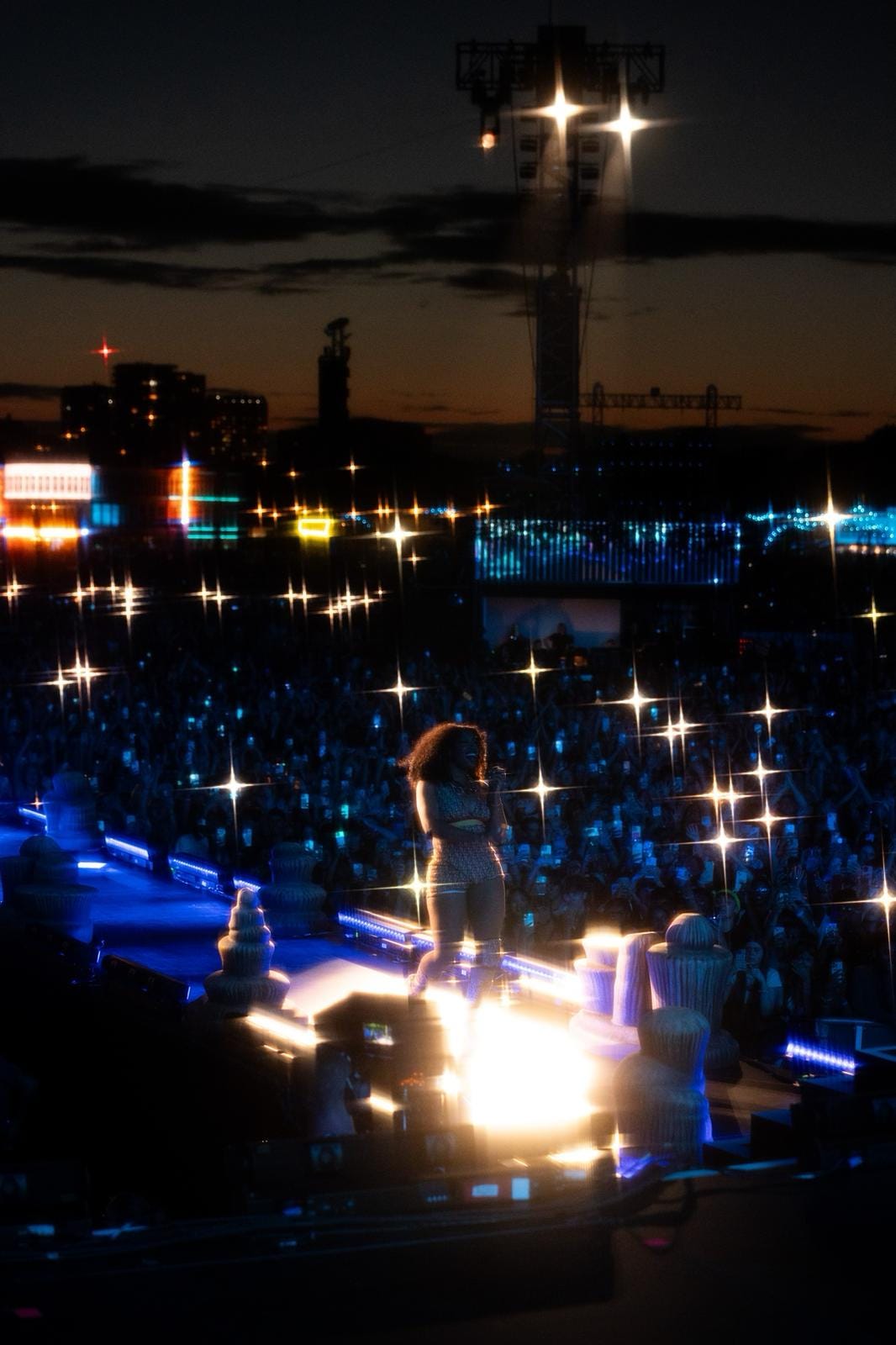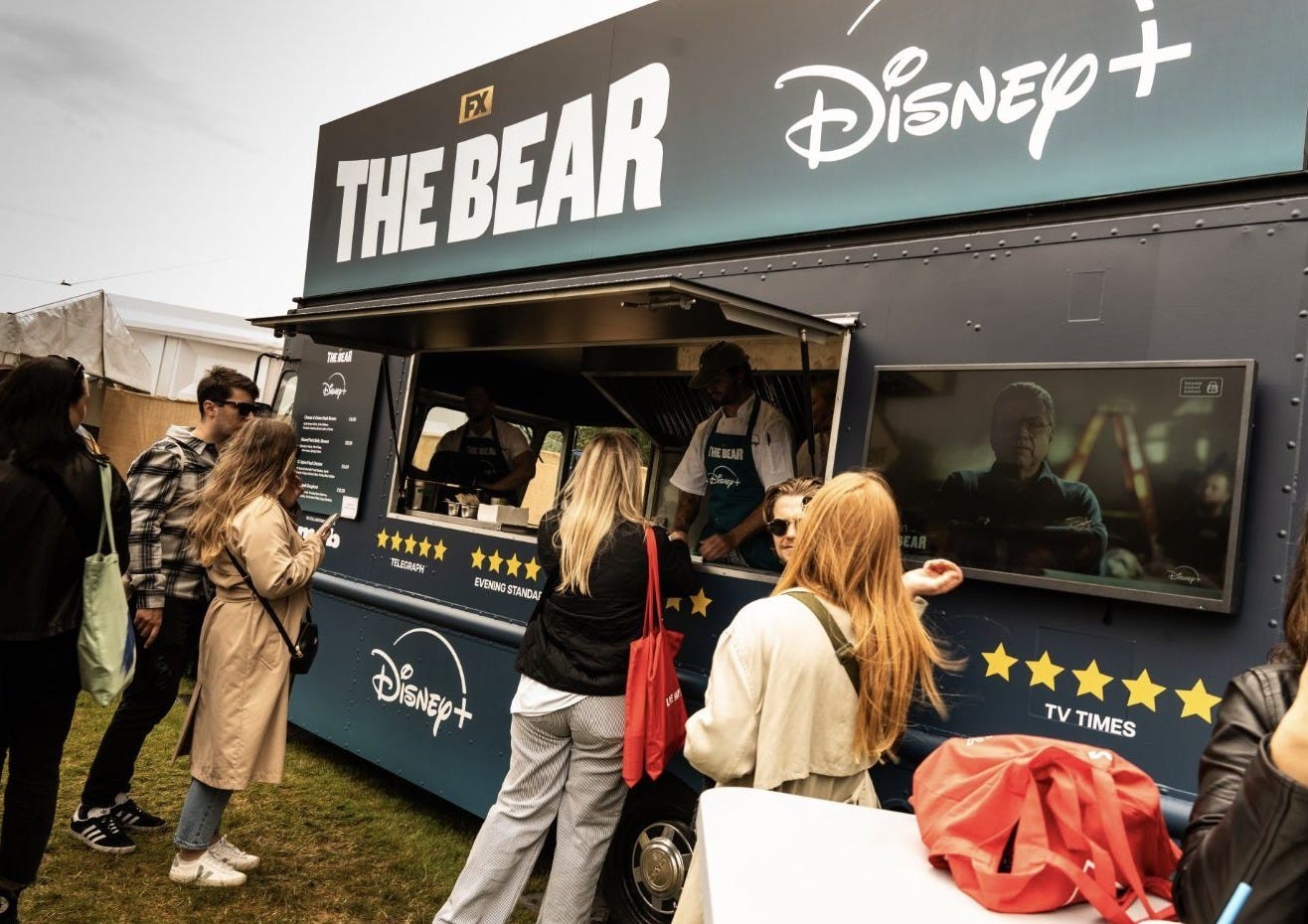ISSUE 005
IN SITU this week discusses how brand activations are taking over festivals, and why on-going consumer collaboration is crucial to cultural understanding.
IN SITU is a platform dedicated to the intersection between culture, brand strategy and music. Sometimes the focus will be on one strand more than another, but always sitting in that sweet spot.
ISSUE 005 AT A GLANCE
LONG READ Cultural observation opinion piece: Is the presence of brands at festivals becoming too flagrant?
VERBATIM Quote from cultural tastemaker: Max Bloom - Graphic Designer & Musician (Cajun Dance Party, Yuck)
SHORT READ Belief relating to strategy and/or insight: Core belief #5: Collaborate with your consumers
MUSIC CORNER Album recommendation: Fontaines D.C. - Romance
LONG READ
IS THE PRESENCE OF BRANDS AT FESTIVALS BECOMING TOO FLAGRANT?
Contrary to what the appearance of ads for Christmas gifts might suggest, summer is not over. Holidays are yet to be taken, the Paralympics starts this week, and so far, the weather is holding out.
But the most magical part of summer? Festivals. The glorious escapism in a field for a day or four, filled with warm beer and live music. This year I attended a day each of BST and All Points East, both in blistering sunshine and adorned with the carefree vibes that only exist within those gates. It’s a bubble of energy that bursts only as you’re queuing to leave with aching feet and an empty water bottle.
Three years after the pandemic decimated the live music industry, it feels like a return to form. “Thank goodness for that”, I hear you say, because it’s the euphoria that comes with live music, on that scale, with that many people, that cannot be replaced. However, it must be noted that festivals (and arenas) aren’t selling out like they used to, with fans becoming more cognisant of their spending alongside ticket prices rising. For instance, Burning Man did not sell out this year for the first time since 2011. A festival for the cultural elite, this should act as a warning sign.
When looking at the UK, the range of formats and genres is encouraging. Day parties like Recess, one-offs such as Rally, one-day festivals across multiple days such as All Points East and Wireless, and weekends like We Out Here, one could be at a festival every day from May to September.
However, the relief and joy of this healthy offering is somewhat tainted by the increasingly brazen attitude of brands at festivals. I’m well aware that branding and music go hand-in-hand, whether it’s artist partnerships or event sponsorship, there is a whole world dedicated to this relationship, and of which I approve.
The slightly uncomfortable feelings percolate when I enter festivals and just see logos. These fields are meant to be an alternative reality, one where normal life is suspended, existing within ‘the bubble’ as a community of like-minded individuals. But instead, I am greeted with the Casamigos house, The Bear Disney+ food truck, the Oatly ice-cream stand, the Amex Experience…and so on.
I fully understand the necessity for brand inclusion at these events. The truth is that without brands, we wouldn’t have a festival to go to. Given the chasm left by the pandemic, brands were needed more than ever to get these festivals back up and running. I wouldn’t go so far as to say that it takes away from the music, because the artists are operating at a frequency far beyond brand activations, but it does feel somewhat inharmonious.
From a punter’s perspective, maybe it’s not that noticeable. One can choose to not interact with brands by patronising the usual food & drink outlets, and dodging the allure of free products and prizes. But you will still be attending the L’Oreal stage, or walking past a 10ft logo on your way to the loos, or be thrust a free Coca-Cola on entry. So really, it’s unavoidable at the best of times. Of course there are benefits of getting stuck into the brand stuff, like drinking a proper cocktail or snapping a photo booth print. But that’s not really why we go to these festivals.
From a strategic perspective, it’s actually a little confusing having stages, VIP areas and lounges renamed every year. The festival itself provides a consistent fan experience with a largely similar layout for ease of navigation. But with new sponsors comes new opportunities for activations.
For instance, I had VIP access at All Points East, which this year was sponsored by Uber One. Everything looked pretty similar to last year, but what I didn’t know until after the fact, was that Uber provided free buggy rides across the site for any Uber One customers. This is a super compelling proposition given clashing set times and walking in the heat through thousands of people. However, given last year’s sponsor was Luno and no such thing was available, I didn’t know to seek it out.
I’m not so naive to think this brand takeover is going to dissipate in the near future. We’ll see even more brand activations creeping in from the edges, becoming hurdles for fans to avoid or jump over. All I ask is that the music stays sacred. This is the leading proposition, and it needs to stay that way for the sake of the artists and live music overall.
Performing is still the best way for artists to connect with fans while actually making money. Given we know how that looks when it disappears, let’s make sure we continue to grow this industry now that we’ve regained control.
VERBATIM
WHERE DO YOU SEE THE FUTURE OF BRAND ACTIVATIONS AND LIVE MUSIC GOING?
Max Bloom - Graphic Designer & Musician (Cajun Dance Party, Yuck)
“Festivals working with brands is definitely not new. I vividly remember visiting the Carling amnesty at Reading Festival when I was 16, where you could exchange warm cans of beer for cold cans of Carling. Brands sponsoring festivals doesn’t have to be a bad thing, but the difference is that when a brand is a long-term partner, it becomes part of the festival’s identity. When a festival collaborates with multiple brands every year, this gets lost.
Music festivals have become a big business, but I’ve played too many that have opened and closed in the same year. The idea of bolstering your profits by collaborating with brands definitely makes sense from a business perspective, but it doesn’t add anything to the experience, and in fact, probably takes something away.”
SHORT READ
CORE BELIEF #5: COLLABORATE WITH YOUR CONSUMERS
There are cultural leaders in every city who are shaping perceptions of your brand more than you could know. As the saying goes, “you don’t know what you don’t know”, and usually, brands need a reality check on their perception.
These aren’t just any consumers (there is of course value in this too). Cultural leaders are at the forefront of what’s happening, or about to happen, and their input is invaluable. Bringing them in behind the scenes, on an ongoing basis, is a smart way of investing in a brand’s future, while also being respectful of the individual’s time and talents.
Whether it’s regular touch-point conversations throughout the year, ad-hoc workshops or contracted days per month, these cultural leaders are the key to not just understanding your brand, but the entire cultural make-up of a city or region. In-house brand teams can be excellent, but ‘brand fog’ is real, and even the most culturally-minded team members will have blindspots. Best to address these head-on instead of ignoring them as they grow.
MUSIC CORNER
FONTAINES D.C. - ROMANCE
Not my usual musical direction, but good music defies genre, and this is most definitely good music. An unexpected mellowing of sound from the post-punk Dublin-born band, Fontaines D.C. deliver their fourth album with the confidence and creative license that comes from over a decade in the game. Part of the XL Recordings family who are known for prioritising artist development, Fontaines D.C. continue to reap the benefits of honing their craft.
Don’t forget to follow IN SITU on Instagram @insitu.njd, and check out my website at nicolajdavies.com.





